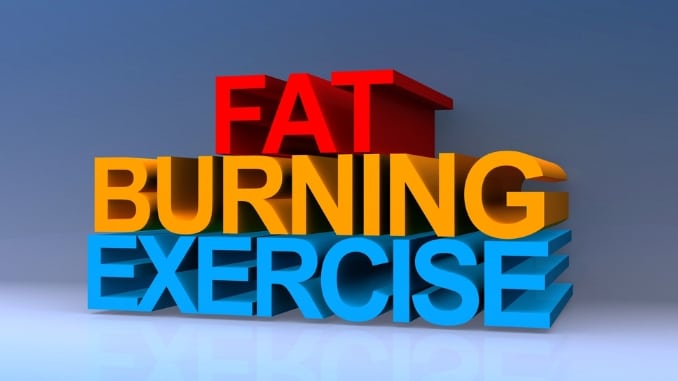If the treadmill feels more like a chore than a challenge, it’s time to shake things up. Kickboxing circuit training isn’t just another workout—it’s a high-energy, fat-blasting routine that torches calories, tones your entire body, and makes you feel like a total powerhouse.
With a mix of punches, kicks, and bodyweight moves, you’ll boost strength, cardio, and confidence—all in under 45 minutes. No boring machines. No endless reps. Just fast, functional fitness that keeps you coming back for more.
Ready to hit reset on your routine? Let’s go.
1. Burpee Box Jump
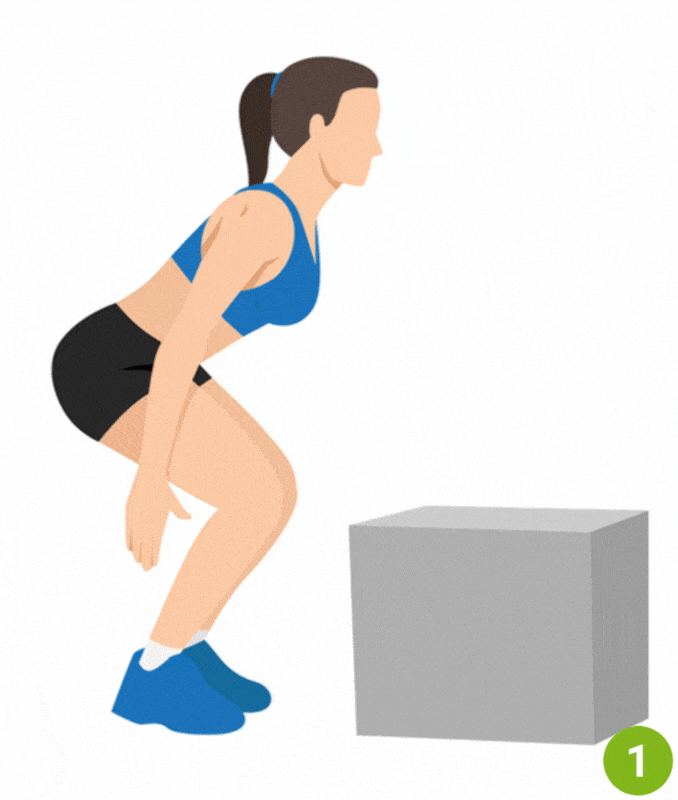
- Begin in an upright standing position in front of a sturdy box or step, maintaining good alignment with your head, shoulders, hips, and feet.
- Contract your core, bend your knees, and place your hands on the floor to move into a push-up position.
- Perform one full push-up, then jump your feet forward toward your hands.
- From here, explode upward into a jump and land softly with both feet on top of the box.
- Stand tall at the top.
- Carefully step or jump back down to the floor and return to the starting position.
- Repeat the movement for several repetitions, focusing on controlled landings and powerful jumps.
Although high intensity, this movement can be scaled by reducing the box height or skipping the push-up.
2. Single Arm Bench
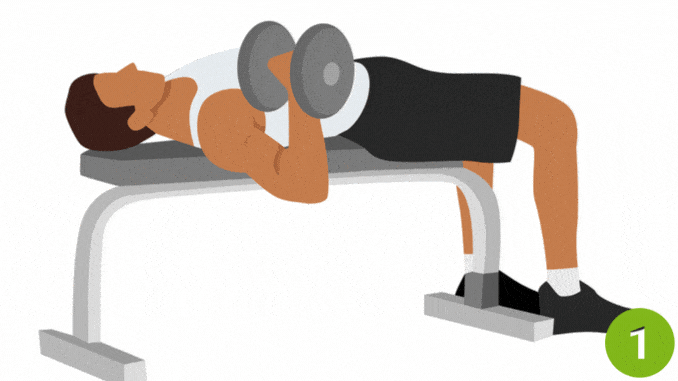
- Begin by lying flat on a bench or stacked steps with your knees bent and feet flat on the floor, maintaining good alignment with your head, shoulders, hips, and legs.
- Hold a dumbbell in one hand, resting your opposite hand on your core for stability.
- Engage your core muscles.
- Slowly press the dumbbell straight up toward the ceiling until your arm is fully extended.
- Pause briefly, then lower the weight back down to shoulder level in a controlled motion.
- Repeat the movement for several repetitions, then switch arms and repeat on the opposite side.
- Focus on maintaining balance and core control throughout the exercise.
This enhances unilateral upper body strength and stability while engaging the core.
3. Kettlebell Swing

- Begin in an upright standing position with your feet shoulder-width apart, holding a kettlebell with both hands in front of your body.
- Maintain good alignment with your head, shoulders, hips, and feet.
- Hinge at your hips and slightly bend your knees to swing the kettlebell back between your legs.
- Engage your core and drive your hips forward to swing the kettlebell up to chest height, keeping your arms straight but relaxed.
- Let the kettlebell swing back down naturally as you hinge again at the hips.
- Repeat the movement in a smooth, controlled rhythm.
- Ensure balanced effort on both sides to prevent muscular imbalances.
4. Ab Roll-out

- Begin in a kneeling or plank position, holding onto an ab wheel.
- Engage your core and slowly roll the wheel forward, keeping your back flat and arms extended.
- Roll out as far as you can control, then pull the wheel back to the starting position using your abs.
- Repeat the movement, maintaining a strong core throughout.
5. Thrusters
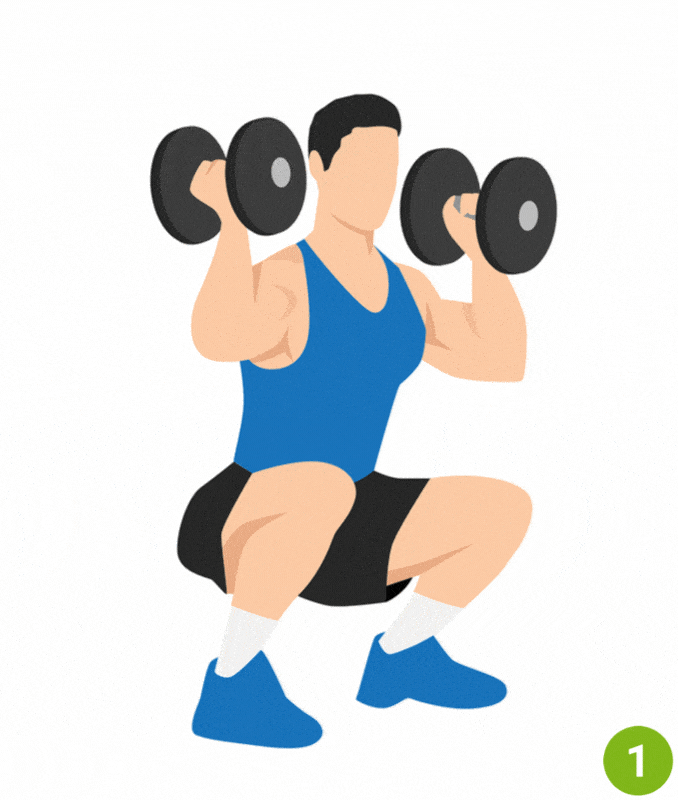
- Begin in a standing position holding a pair of dumbbells at shoulder level with your elbows bent.
- Lower into a squat, keeping your chest tall and knees behind your toes.
- Drive through your heels to stand up while pressing the dumbbells overhead.
- Lower the dumbbells back to shoulder height and repeat the movement.
- To add variety, alternate between a right-foot-forward and left-foot-forward stance.
This movement develops core stability, similar to maintaining a guard position in kickboxing.
6. Medicine Ball Slam
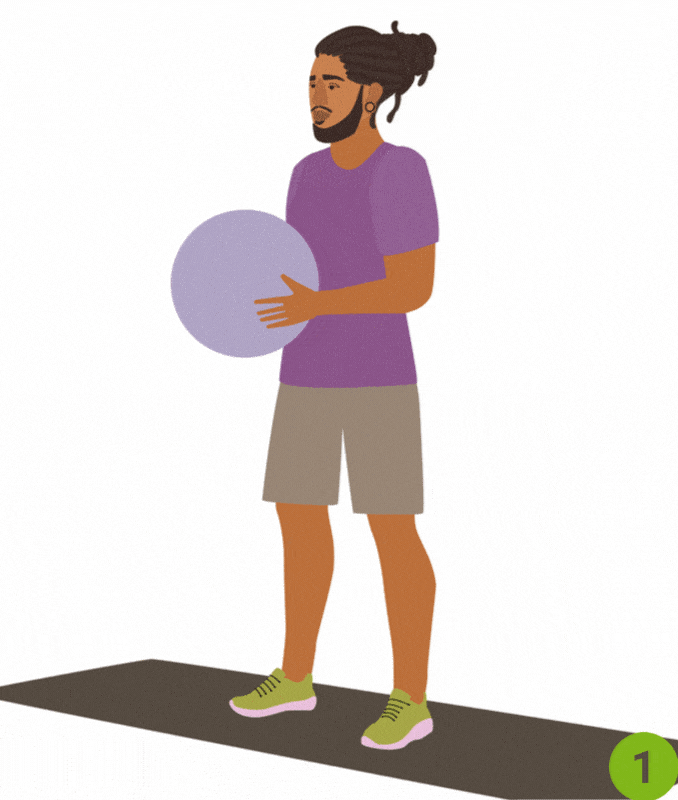
- For this kickboxing circuit workout, begin in a standing position with your feet hip-width apart, holding a medicine ball at chest level.
- Engage your core and lift the ball overhead.
- Using your full body and driving through your legs and core, slam the ball down onto the ground as hard as possible.
- Catch the ball as it bounces (or pick it up) and repeat the movement in a continuous rhythm.
- Effective for developing explosive power and mimicking throwing motions common in combat sports
What Is Kickboxing Circuit Training?
Kickboxing circuit training mixes kickboxing moves with other exercises like bodyweight drills or light strength training. It’s done in short bursts, followed by quick rest, to copy how a real fight feels—lots of effort, then a break.
This type of training helps improve both heart and muscle health. In a 12-week study with adults aged 50 to 85, this kind of workout improved hand grip strength, walking speed, body fat, and bone health. Even though it didn’t add much muscle mass, it made people stronger and more balanced—important for staying active and avoiding falls.
In short, kickboxing circuit training [1] is a fun, full-body workout that helps you move better, stay strong, and support your bones as you age.
What It Improves
- Promotes the release of anabolic hormones like growth hormone and testosterone, which support muscle growth.
- Boosts heart rate, lactate, and glucose like real combat does
- Builds anaerobic power, stamina, and full-body strength [2]
Benefits of Kickboxing Circuits

- Can burn up to 800 calories per session, depending on intensity and duration.
- Builds strength in legs, arms, core, and total body
- Builds heart strength [3], endurance, and overall physical fitness levels.
- Improves coordination, balance, speed, and body control quickly
- Sharpens mental focus while keeping the mind fully engaged
- Relieves stress fast by punching, kicking, and moving with power
- Increases confidence as you master combos and feel stronger daily
- Enhances posture and stability through core-focused, functional movements
- Requires little to no equipment—perfect for home workouts
- Fun, energizing, and never boring—great for all fitness levels
Why It’s Helpful
- It’s a safe way to train hard without getting hurt
- Helps coaches see how much a fighter is improving
- Shows what kickboxing does to the body during training
What is Kickboxing Circuit Training For
- All fitness levels – you can adjust the intensity easily
- Great for fat loss and boosting your metabolism
- Ideal for cross-training or breaking through a plateau
- Athletes wanting better endurance, speed and power
- Busy professionals who need quick, effective workouts
- Anyone who wants a fun, high-energy challenge
Conclusion
Kickboxing circuit training blends cardio, strength, and skill into one powerful workout. It burns fat, builds lean muscle, and keeps your workouts exciting and effective. Join a kickboxing class or try speed bag drills to improve your jab, left hook, left uppercut, and right hook.
Start small – once a week is enough to feel the difference. Grab your gloves, set your timer, and unleash your inner fighter.
Crush your fitness goals in just 7 minutes a day! Try the 7 Minute HIIT Workout for fast, effective results. Start now and feel the burn!
Frequently Asked Questions
What is a kickboxing circuit?
A kickboxing circuit is a high-intensity workout that combines kickboxing moves (like punches, kicks, and knee strikes) with bodyweight or strength exercises. It’s done in rounds or “stations,” rotating through exercises with minimal rest to improve strength, cardio, and endurance. Roundhouse kick drills are often included for explosive power.
What is circuit training in boxing?
Circuit training in boxing is a series of exercises performed back-to-back with short rest periods. It includes boxing drills (like shadowboxing, bag work, or footwork) mixed with strength, speed, and core movements to build power, conditioning, and fight-specific stamina. Movements like right knee strikes and kickboxing combinations keep the body challenged.
What kind of training do kickboxers do?
Kickboxers train with a mix of skill work (like striking techniques and sparring), strength training, cardio conditioning, flexibility drills, and circuit-style workouts. This combination helps improve power, endurance, speed, agility, and mental focus. Practicing with the left foot forward or focusing on the right hand can build symmetry.

